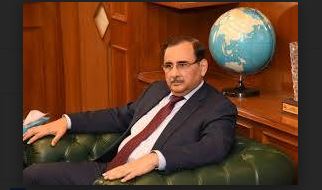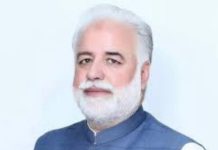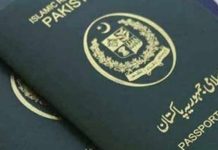KARACHI, JAN 22 /DNA/ – The Businessmen Panel (BMP) of the Federation of Pakistan Chambers of Commerce and Industry (FPCCI) has said that increase in Foreign Direct Investment (FDI) in the first half the current fiscal year reflects the improvement in security situation, implying that investors had started coming back to Pakistan as the country has attracted FDI of over $1 billion, up by 20 percent owing to government’s efforts to create a conducive environment for investors.
FPCCI’s Businessmen Panel Chairman Mian Anjum Nisar said that the country’s liberal policies offered one of the most attractive investment regimes in the region, anticipating that Pakistan might attract $2.5 billion in foreign inflows in fiscal year 2021-22.
Although the FDI data was encouraging, it might be difficult to keep the pace of FDI inflows at present levels for the next half year if Covid-19 challenges continued to mount, he said. FPCCI former president appreciated the government’s resolve to meet the challenges faced by Pakistan in European markets vigorously, suggesting that it should devise strategies to promote Pakistani products and called upon the trade officers to take advantage of opportunities offered by the China Pakistan Economic Corridor.
He said that lifting of Covid-19 restrictions across the world during the first half of the current fiscal year also encouraged foreign investors to press ahead with their investment plans for Pakistan. Moreover, the revival of work on energy projects under CPEC drew investment in the power sector, which turned out to be the top segment in FDI inflows during July-Dec 2021.
Quoting the figures, he said that in Dec 2021, Pakistan registered 29 percent year-on-year increase in foreign investment, which reached $219 million. The power sector topped the foreign investment chart as investment inflows amounted to $364 million during the half of the year, however, it was 36pc lower than the investment of $487 million in the same period of 2020. The investment in financial businesses jumped 38pc to $206 million during July-Dec 2021 against $128 million in the same period of 2020. The communication sector recorded foreign investment of $147 million in the period under review against the outflow of $42 million in July-Dec 2020.
China emerged as the biggest investor in Pakistan as it poured $306.7 million in July-December 2021. It, however, was 21.3 percent lower than the investment of $389.8 million in the corresponding period of 2020. Investment by the US more than doubled to $149.3 million in the period under review against $68.2 million in July-December 2020. Investment from the Netherlands skyrocketed 184.6% as it rose from $43.7 million in July-December 2020 to $124.5 million in July-Dec 2021.
The improvement in FDI came on the back of revival of ongoing projects under CPEC, particularly those that were related to the power sector, he said, adding that work on energy schemes had been halted due to the Covid-19 outbreak in China and then in Pakistan but during the past six months, activities resumed at full pace, which led to the flow of investment between the two countries. Lockdowns have been lifted by both sides and it bodes well for foreign investment flows, he said.
He appreciated the government’s efforts to attract foreign investment in the country, which has borne fruit as it jumped 20% despite the challenges posed by the pandemic. The timeframe of this data (July-December) is from the end of third wave of Covid-19 and the beginning of fourth wave, so there were no restrictions in between and investors poured money freely, he pointed out. However, the investment environment will be challenging in future, he warned.
Work on CPEC has resumed and this is the major reason behind the sharp increase in inflows during July-December 2021, he said and elaborated that hydropower and coal projects were being executed as part of CPEC, adding that in future startups would lead the FDI inflows.
Mian Anjum Nisar said that despite some increase in foreign investment, the FDI inflows were not sufficient to fully offset the widening in the current account gap. He said that only political will and drastic steps can revive the economy, which should have grown significantly and constantly for visible impact. He advocated the need for raising the country’s tax base so that tax-to-GDP ratio improves from current 9 percent. Besides governance challenges, adverse security perception, political instability and the foreign trade offices role is also vital for the continuity of enhancement in foreign investment, he concluded.

















